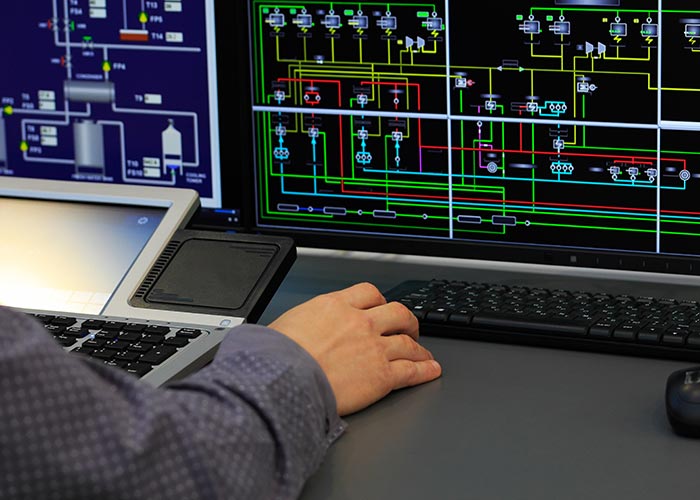The forces impacting us today are accelerating industrial automation
One of the side effects of the global pandemic has been a boom in industrial automation. Even if a vaccine is eventually created, companies everywhere are realizing their future workforce must not only be smaller and more remote from the factory but also more dependent on smart devices to do their jobs.
Automation – a trend that is only speeding up
Prior to the coronavirus, industrial automation was on a tear. The catalyst for this rapid growth is the Industrial Internet of Things — interconnected, internet-enabled smart machines — which helps everything from water treatment plants to food processing factories run more safely and efficiently.
Take the case of an industrial mixer at an ice cream plant. Not long ago, this machine might have sensors that only reported motor temperature and oil pressure to an in-plant Supervisory Control and Data Acquisition system. Now with embedded “smart” chips, new mixers can report on drive gear and blade condition, when the next oil change should take place, and whether or not the mixer is performing optimally.

SCADAs are evolving
The evolving flexibility of SCADAs — the way humans monitor all these smart machines — is also accelerating automation. The incremental cost and complexity of monitoring beyond the “critical system data” used to be a big barrier in expanding automation projects. But today’s cloud-connected devices make it easier to configure systems to capture and analyze data from more applications at a much lower cost.
New SCADA platforms also allow companies to shift from monitoring mission-critical parts of their operation to a “whole systems” approach. For example, water and wastewater treatment services that used to only monitor things like pumping stations and settling ponds can now more easily expand to monitoring upstream and downstream surface water quality in real-time.
But as the number of applications being monitored grows, so does the complexity of possible control and response options. That’s where IIoT and SCADA data can be combined for predictive analytics that discerns relationships between certain conditions and a better product. These relationships allow operators to predict more precisely when a machine needs renewal or maintenance to prevent failure.
Measurable business benefits
Beyond operational questions, the large amounts of data that the IIoT generates along with the SCADA can fuel analytics software to help answer business questions like:
“How can we make this product more quickly and more cheaply?”
“Do we need to shift production schedules to different times or days?”
“How can we save on energy costs?”

Alarm notification loves data
Put simply, alarm and event notification are more effective as the amount of data available grows. More data means operators and engineers can design more refined alarms that monitor more events for different purposes. A sophisticated classification of categories in alarms that require human intervention can be quickly and directly communicated to the appropriate person for action.
Alarm notification software accommodates the different processes caused by the expansion of smart machines as the IIoT extends to the edge of operations.
Truly useful alarm notification software handles real-time conditions and diagnostics, dynamically changing alert routing based on severity and type. The versatility of the software should be judged on how well it models complex applications to bring the right people to the problem at the right time.
The task laid before industry is how best to take advantage of the new information the IIoT can provide to automation projects.



